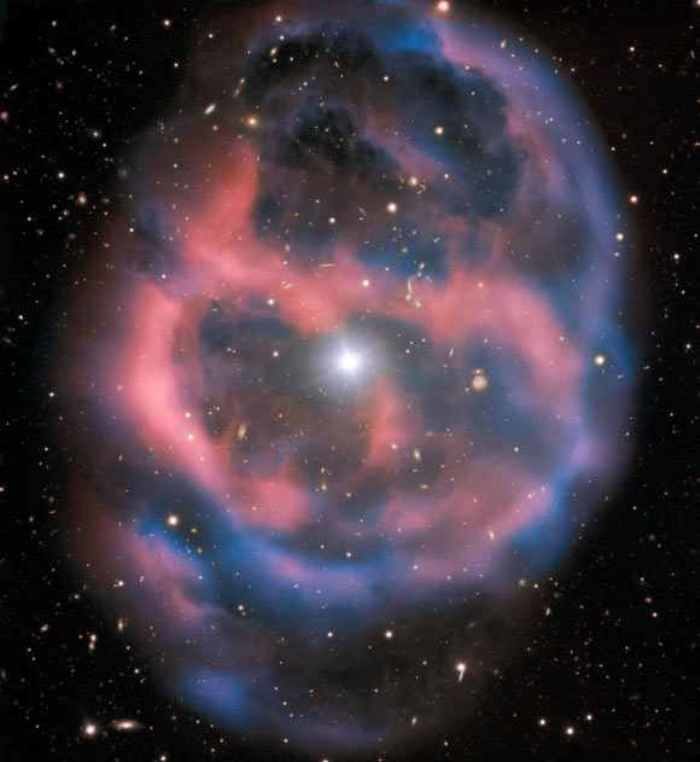
ESO 577-24, also known as IRAS F13378-1937 or 2MASS J13404134-1952553, resides approximately 1,400 light-years away from Earth.
It was discovered as part of the National Geographic Society-Palomar Observatory Sky Survey in the 1950s, and was recorded in the Abell Catalogue of Planetary Nebulae in 1966.
The dazzling nebula is the remains of a dead giant star that has thrown off its outer layers, leaving behind a small, intensely hot dwarf star.
This diminished remnant will gradually cool and fade, living out its days as the mere ghost of a once-vast red giant star.
"Red giants are stars at the end of their lives that have exhausted the hydrogen fuel in their cores and begun to contract under the crushing grip of gravity," the ESO astronomers explained.
"As a red giant shrinks, the immense pressure reignites the core of the star, causing it to throw its outer layers into the void as a powerful stellar wind."
"The dying star's incandescent core emits UV radiation intense enough to ionize these ejected layers and cause them to shine."
"The result is what we see as a planetary nebula - a final, fleeting testament to an ancient star at the end of its life."
"As the dwarf star cools, the nebula will continue to expand into space, slowly fading from view."
This image of ESO 577-24 was created as part of the ESO Cosmic Gems Program, an initiative that produces images of interesting, intriguing, or visually attractive objects using ESO telescopes for the purposes of education and public outreach.
The program makes use of telescope time that cannot be used for scientific observations; nevertheless, the data collected are made available to astronomers through the ESO Science Archive.



The pink surrounds the eyebrows, both sides of the face, the left eye is bigger than the right, the nose is pink, the chin is blue and pink and perhaps it has its hair piled up or one of those bound skulls.
If that's the case, I'd guess the brightest star there is the Pineal Gland.
R.C.